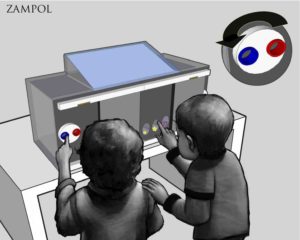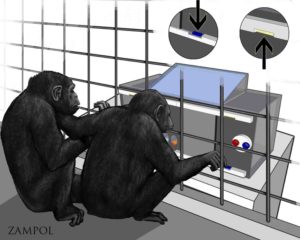What makes human culture different? Over the generations we humans hatch new ideas, broaden our knowledge and expand our technology – and we do this by building on the know-how of our ancestors. Other species exhibit traditions, but show little sign of ‘ratchetting up’ their cultural know-how over time [1].
To understand what underpins this difference we compared the approaches of children, chimpanzees and capuchin monkeys to tasks that could be solved at increasingly difficult levels to extract better and better rewards [2,3]. Only children consistently got beyond the simplest initial stage. They were able to do so because only they shared their skills, knowledge and rewards to solve the task together [3].
[1] Dean L.G., G.L. Vale, K.N. Laland, E. Flynn and R.L. Kendal (2014) Human cumulative culture: a comparative perspective. Biological Reviews, vol 89, 284-301. (2014)
[2] Marshall-Pescini, S, Whiten, A (2008) Chimpanzees (Pan troglodytes) and the question of cumulative culture: an experimental approach. Animal Cognition, 11, 449–456.
[3] Dean L.G., R.L. Kendal, S.J. Schapiro, B. Thierry and K.N. Laland (2012) Identification of the Social and Cognitive Capabilities Underlying Human Cumulative Culture. Science, 335 (6072) 1114- 1118

